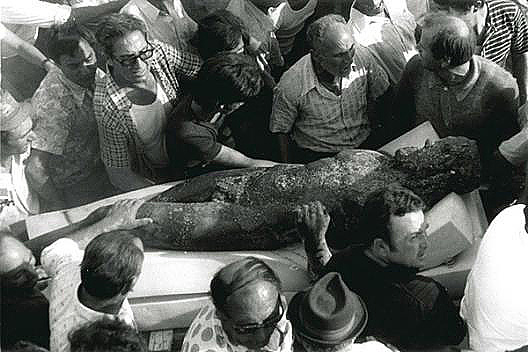
Celtic forts, Roman salt flats and medieval walls are hidden under the sidewalks of Vigo, like very well-kept secrets of the history that made up the olive city. Catacombs, secret passages and powder kegs complete the underground offer of an unknown city, which few have had the privilege of seeing and which is perhaps closer than we imagine.
Like all history, it must begin at the beginning, and that beginning takes us to the oldest site in the city and also one of the best known: the Castro hill forts (hence its name). Although today the buildings of this Celtic site are on the surface, in reality they are a museal reconstruction of what was found under one of the slopes of the mountain: the remains found date from the second and third centuries BC and archaeologists suppose that the city was founded on them.
Also known as Finca Mirambell, this site turns out to be the only Roman town in Galicia that is fully excavated and can be visited. After its discovery, approximately one hundred years ago, it has been established that the town was established in the surroundings of the beaches because its inhabitants were dedicated to trades related to the sea and the salt flats and that it dates from the 4th and 5th centuries AD.
To close the chapter on Roman Vigo, there are the remains of a necropolis (cemetery) that were found under Pontevedra street in the middle of the last century, studies that were completed with excavations in the 1990s in the nearby Inés Pérez de Ceta street. All the stelae found today are in the Quiñones de León Museum and they allowed to know a little more the Roman settlements of the city of Vigo.
Thanks to the salt flats, the villas and the necropolis, it has been possible to determine that entire families moved to Roman Vigo who settled to form a powerful industry related to the sea and that turned the city into an important commercial port.
The next underground treasure of the olive city involves taking a trip back in time, because under the fortress of O Castro there is a whole world that will soon be accessible to the general public. This was stated by Abel Caballero after his discovery, last summer, when he spoke of the discovery of the tunnel, which dates from the late seventeenth century and which could have served to move people and materials or as a refuge and storage area during the continuous invasions it suffered. Vigo.
The legend says that this tunnel could link the fortress of O Castro with the castle of San Sebastián, where today the City Council building stands. Although they were accessible until the 1990s, the truth is that these tunnels remain a mystery to many people from Vigo and hide hundreds of secrets that will not be revealed until they can be visited.
One of the best kept secrets of the city is represented by the tunnel of the pipes, of which many have seen the entrance but few know its history. In an alley adjacent to Victoria Street, almost in the Plaza de Compostela, several pubs hide the curious entrance of a tunnel dating from the 19th century and which has raised all kinds of questions, as it has been bricked up for decades. It communicated the part closest to the port with the current Principe Street, although it is not known very well why it was built. For years it has been painted as the entrance to a huge abbey or castle, although the door is quite small and you cannot access the interior.
The most modern site that has been discovered (so far) corresponds to some powder kegs that date from the years of the Primo de Rivera dictatorship, specifically it is believed that they could be used during 1926 and 1927. As its name indicates These tunnels were used to store ammunition underground and were discovered during the works carried out by the Xunta at ETEA for the reconversion of the land.



